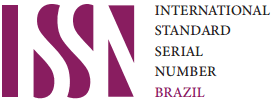The relationship between specific psychiatric disorders and type of crimes committed in a forensic psychiatry population
DOI:
https://doi.org/10.25118/2763-9037.2022.v12.405Keywords:
forensic psychiatry, not guilty by reason of insanity, adverse childhood events, substance use disorders, criminality, dual pathologyAbstract
Introduction: The association between criminality and psychiatric disorders has been extensively studied. The most recent studies show that this appears to exist only in acute stages of the disorder. Adverse childhood events are also a risk factor in violent and antisocial behaviors. Methods/Objectives: A retrospective exploratory study was designed, including 91 men and 19 women admitted in the Forensic Ward of Coimbra Hospital and University Center between January 2018 and august 2021 to evaluate the association between psychiatric diagnosis and crime committed. Gender differences and adverse childhood events were also evaluated. Results: Although psychotic disorders were the most common in both groups, mood disorders were significantly more common in women. 39 patients had comorbidity with substance abuse which was associated with a greater prevalence of criminal history and childhood adverse events, but also with a lesser prevalence of violent crimes and homicide. The victims of the crimes committed were mainly from the patient’s nuclear family, with a low prevalence of crimes committed against strangers. The sample patients also reported more adverse childhood events than the general population. Discussion: There were no significant differences in the type of crime considering the psychiatric diagnosis, but comorbidity with substance abuse was associated with greater criminality, but with less violent crimes. There was a greater prevalence of crimes committed against the nuclear family, and particularly against offspring in women.
Downloads
Metrics
References
Schellenberg EG, Wasylenki D, Webster CD, Goering P. A review of arrests among psychiatric patients. Int. J. Law Psychiatry. 1992; 15(3):251-264. https://doi.org/10.1016/0160-2527(92)90002-I
PMid:1399184
Cocozza JJ, Steadman HJ, Melick ME. Trends in violent crime among ex-mental patients. Criminology. 1978;16(3):317−334. https://doi.org/10.1111/j.1745-9125.1978.tb00095.x
MonahanJ, Steadman HJ. Crime and mental disorder: an epidemiological approach. Crime and Justice. 1983;4:145-189. https://doi.org/10.1086/449088
Link BG, Stueve A. Psychotic symptoms and the violent/illegal behavior of mental patients compared to community controls. In: Link BG, Stueve A. From violence and mental disorder: developments in risk assessment. Chicago: University of Chicago Press; 1994. p. 137-159.
Whiting D, Lichtenstein P, Fazel S. Violence and mental disorders: a structured review of associations by individual diagnoses, risk factors, and risk assessment. The Lancet. Psychiatry. 2021;8(2):150-161. https://doi.org/10.1016/S2215-0366(20)30262-5 PMid:33096045
Teplin LA. Psychiatric and substance abuse disorders among male urban jail detainees. Am. J. Public Health. 1994;84(2):290-293. https://doi.org/10.2105/AJPH.84.2.290 - PMid:8296957 PMCid:PMC1614991
Beck JL. Mental illness and violent acts: protecting the patient and public. JAMA. 1998;280(5):407-408. PMID: 9701060.
Steadman HJ, Mulvey EP, Monahan J, Robbins PC, Appelbaum PS, Grisso T, Roth LH, Silver E. Violence by people discharged from acute psychiatric inpatient facilities and by others in the same neighborhoods. Arch. Gen. Psychiatry. 1998;55(5):393-401. https://doi.org/10.1001/archpsyc.55.5.393 - PMid:9596041
Mendes E, Temótio J, Cabral AS. Aspetos médico-legais em psiquiatria. In: Saraiva CB, Cerejeira J. Psiquiatria fundamental. Coimbra: Lidel; 2014. p. 507-521.
Harris A, Lurigio A. Mental illness and violence: a brief review of research and assessment strategies. Aggress. Violent Behav. 2007;12:542-551. https://doi.org/10.1016/j.avb.2007.02.008
Alves J, Dutra A, Maia A. História de adversidade, saúde e psicopatologia em reclusos: comparação entre homens e mulheres. Ciência & Saúde Coletiva. 2013;18:701-709. https://doi.org/10.1590/S1413-81232013000300016 PMid:23546197
Jorm AF, Mulder RT. Prevention of mental disorders requires action on adverse childhood experiences. Aust. N. Z. J. Psychiatry. 2018;52(4):316-319. https://doi.org/10.1177/0004867418761581 - PMid:29506400
Felitti VJ, Anda RF, Nordenberg D, Williamson DF, Spitz AM, Edwards V, Koss MP, Marks JS. Relationship of childhood abuse and household dysfunction to many of the leading causes of death in adults: the adverse childhood experiences (ACE) Study. Am. J. Prev. Med. 1998;14(4):245-258. https://doi.org/10.1016/S0749-3797(98)00017-8 - PMid:9635069
Silva SSP, Maia A. Versão portuguesa do Family ACE Questionnaire (Questionário da História de Adversidade na Infância). In: Noronha A. (coord.). Avaliação psicológica: formas e contextos. Actas da Conferência Internacional [sobre] Avaliação Psicológica, 13. Braga: Psiquilibrios Edições; 2008. https://hdl.handle.net/1822/11323
Silva SSP, Maia AC. Adversidade na infância, características psicológicas e problemas de saúde física: comparação entre obesos e não obesos. Archives of Clinical Psychiatry (São Paulo). 2011;38:194-200. https://doi.org/10.1590/S0101-60832011000500005
Vieira F, Cabral AS, Latas AJ. A (In)imputabilidade e a perícia psiquiátrica prevista no Artigo 159o do CPP. In: Vieira F, Cabral AS, Saraiva CB. (eds). Manual de psiquiatria forense. Lisboa: Pactor; 2017. p. 145-159.
Kraemer HC. The reliability of clinical diagnoses: state of the art. Annu. Rev. Clin. Psychol. 2014;10(1):111-130. https://doi.org/10.1146/annurev-clinpsy-032813-153739 - PMid:24387235
Seney ML, Sibille E. Sex differences in mood disorders: perspectives from humans and rodent models. Biol. Sex Differ. 2014;5(1):17. https://doi.org/10.1186/s13293-014-0017-3 - PMid:25520774 - PMCid:PMC4268901
Reed KD, Prunty M, Strang J. Measuring, preventing and treating global drug abuse. In: Ghodse H, Herrman H, Maj M, Sartorius N. Substance abuse disorder. 2011. p. 75-80. https://doi.org/10.1002/9780470975084.ch4 PMid:19691981
Portugal. Serviço de Intervenção nos Comportamentos e nas Dependências. Relatório anual de 2018. A situação do país em matéria de drogas, toxicodependência e álcool. 2019. https://www.sicad.pt/PT/Documents/2019/relatorio_2018/Relat%C3%B3rioAnual_2018_ASitua%C3%A7%C3%A3oDoPa%C3%ADsEmMat%C3%A9riadeDrogasEToxicodepend%C3%AAncias.pdf
Van Os J. Does the urban environment cause psychosis? The British Journal of Psychiatry : the journal of mental Science. 2004;184(4):287-288. https://doi.org/10.1192/bjp.184.4.287 PMid:15056569
Nijman H, Cima M, Merckelbach H. Nature and antecedents of psychotic patients' crime. J. Forensic Psychiatry Psychol. 2003;14:542-553. https://doi.org/10.1080/1478994031000152754
Sariaslan A, Leucht S, Zetterqvist J, Lichtenstein P, Fazel S. Associations between individual antipshychotics and the risk of arrest and convictions of violent and other crime: a nationwide within-individual study of 74 925 persons. Psychological Medicine. Cambridge: Cambridge University Press; 2021. p.1-9. https://doi.org/10.1017/S0033291721000556
Thom RP, Grudzinskas AJJ, Saleh FM. Sexual behavior among persons with cognitive impairments. Curr. Psychiatry Rep. 2017;19(5):25. https://doi.org/10.1007/s11920-017-0777-7 PMid:28417268
Søndenaa E, Rasmussen K, Nøttestad JÁ. Forensic issues in intellectual disability. Curr. Opin. Psychiatry. 2008;21(5):449-453. https://doi.org/10.1097/YCO.0b013e328305e5e9 - PMid:18650685
Gottfried ED, Christopher SC. Mental disorders among criminal offenders: a review of the literature. J. Correct. Health Care. 2017;23(3):336-346. https://doi.org/10.1177/1078345817716180 PMid:28715985
Tiihonen J, Isohanni M, Räsänen P, Koiranen M, Moring J. Specific major mental disorders and criminality: a 26-year prospective study of the 1966 northern Finland birth cohort. Am. J. Psychiatry. 1997;154(6):840-845. https://doi.org/10.1176/ajp.154.6.840 - PMid:9167513
American Psychiatric Association. Diagnostic and statistical manual of mental disorders. 5th ed. Washington: American Psychiatry Association, 2013. https://doi.org/10.1176/appi.books.9780890425596
Santos V, Caldeira S. Perturbações da personalidade em contexto forense. In: Vieira F, Cabral AS, Saraiva CB. (eds). Manual de psiquiatria forense. Lisboa: Pactor; 2017. p. 411-428.
Friedmann MS, McDermut WH, Solomon DA, Ryan CE, Keitner GI, Miller IW. Family functioning and mental illness: a comparison of psychiatric and nonclinical families. Fam. Process. 1997;36(4):357-367. https://doi.org/10.1111/j.1545-5300.1997.00357.x PMid:9543657
Fang L, Chuang DDM, Lee Y. Adverse childhood experiences, gender, and HIV risk behaviors: results from a population-based sample. Prev. Med. Reports. 2016;4. https://doi.org/10.1016/j.pmedr.2016.05.019 - PMid:27413671 - PMCid:PMC4929123
Mersky JP, Topitzes J, Reynolds AJ. Impacts of adverse childhood experiences on health, mental health, and substance use in early adulthood: a cohort study of an urban, minority sample in the U.S. Child Abuse Negl. 2013;37(11):917-925. https://doi.org/10.1016/j.chiabu.2013.07.011 - PMid:23978575 - PMCid:PMC4090696

Downloads
Published
How to Cite
Issue
Section
License
Copyright (c) 2022 Mariana de Jesus, Vera Martins, Isabela Faria, Manuel Quartilho

This work is licensed under a Creative Commons Attribution-NonCommercial 4.0 International License.
Debates em Psiquiatria allows the author (s) to keep their copyrights unrestricted. Allows the author (s) to retain their publication rights without restriction. Authors should ensure that the article is an original work without fabrication, fraud or plagiarism; does not infringe any copyright or right of ownership of any third party. Authors should also ensure that each one complies with the authorship requirements as recommended by the ICMJE and understand that if the article or part of it is flawed or fraudulent, each author shares responsibility.
Attribution-NonCommercial 4.0 International (CC BY-NC 4.0) - Debates em Psiquiatria is governed by the licencse CC-By-NC
You are free to:
- Share — copy and redistribute the material in any medium or format
- Adapt — remix, transform, and build upon the material
The licensor cannot revoke these freedoms as long as you follow the license terms. Under the following terms:
- Attribution — You must give appropriate credit, provide a link to the license, and indicate if changes were made. You may do so in any reasonable manner, but not in any way that suggests the licensor endorses you or your use.
- NonCommercial — You may not use the material for commercial purposes.
No additional restrictions — You may not apply legal terms or technological measures that legally restrict others from doing anything the license permits.





























